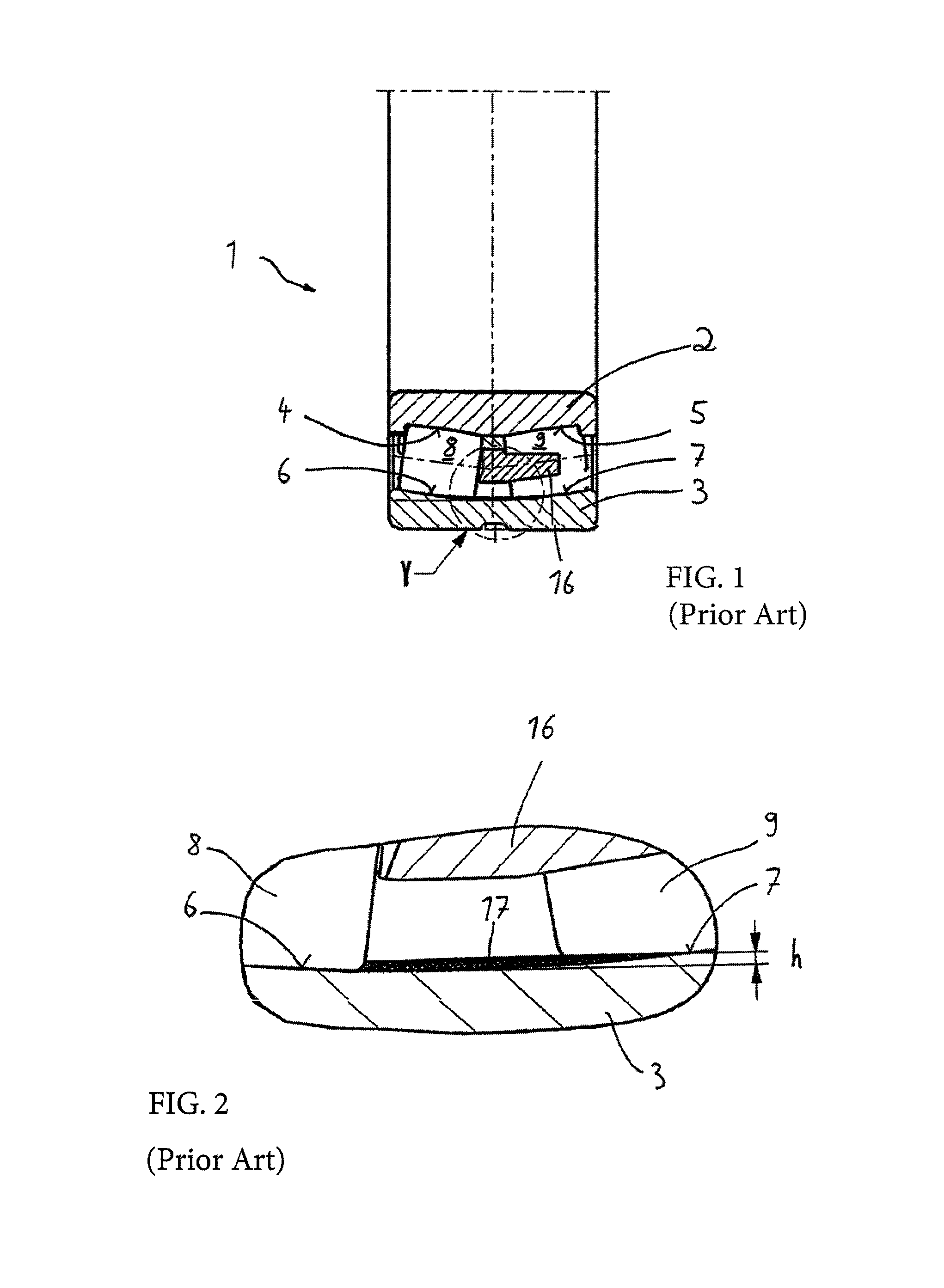Rolling element bearing
a technology of rolling element and bearing, which is applied in the direction of roller bearings, sliding contact bearings, mechanical equipment, etc., can solve the problems of raceway corrosion, damage to the raceway of the outer ring, and risk, so as to prevent early failure, prevent scrapping, and prolong the service life
- Summary
- Abstract
- Description
- Claims
- Application Information
AI Technical Summary
Benefits of technology
Problems solved by technology
Method used
Image
Examples
Embodiment Construction
[0031]An inventively-designed spherical roller bearing 1 is shown in FIG. 3. The inner ring2 and the outer ring 3 have—as was explained in connection with FIG. 1—respective raceways 4 and 5 or 6 and 7 for the rolling element rows 8 and 9.
[0032]The outer ring raceways 6 and 7 now however are not produced as sections of a continuous spherical shape of the radially-inner-lying surface of the outer ring 3. Rather, a groove 10 in the form of a circulating annular groove is machined between the two raceways 6 and 7.
[0033]As can be seen in the detailed view in FIG. 4, the groove 10 has a substantially rectangular shape in radial section. The axial end regions of the groove 10 are only provided with roundings 11.
[0034]The groove depth t is chosen such that—without appreciably weakening the outer ring 3—a sufficient holding space for liquid is formed in the region of the deepest point of the outer ring 3. The maximum possible fluid level of the liquid can thus reach the groove depth t before...
PUM
 Login to View More
Login to View More Abstract
Description
Claims
Application Information
 Login to View More
Login to View More - R&D
- Intellectual Property
- Life Sciences
- Materials
- Tech Scout
- Unparalleled Data Quality
- Higher Quality Content
- 60% Fewer Hallucinations
Browse by: Latest US Patents, China's latest patents, Technical Efficacy Thesaurus, Application Domain, Technology Topic, Popular Technical Reports.
© 2025 PatSnap. All rights reserved.Legal|Privacy policy|Modern Slavery Act Transparency Statement|Sitemap|About US| Contact US: help@patsnap.com



